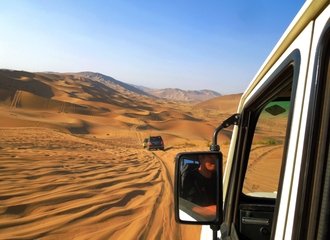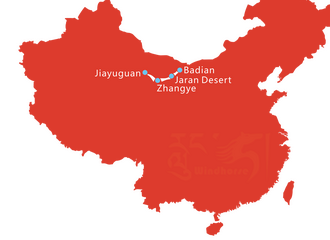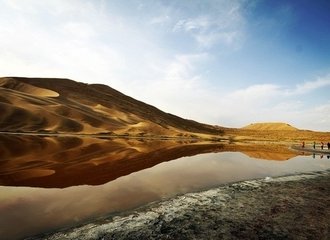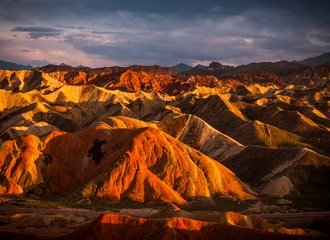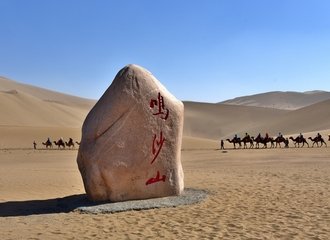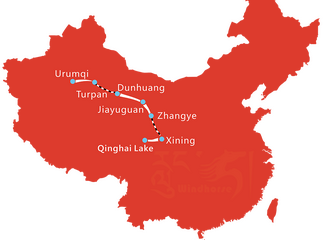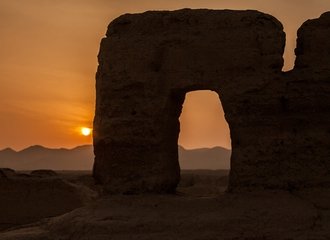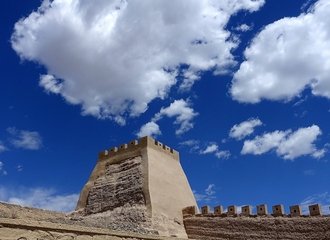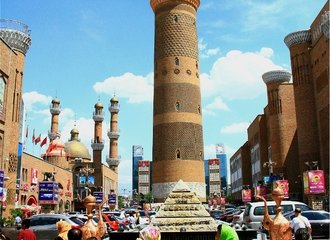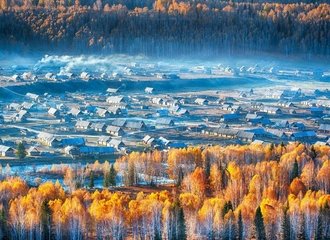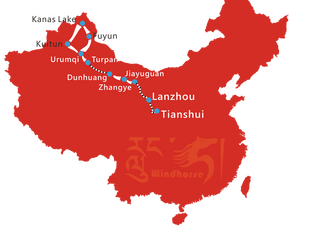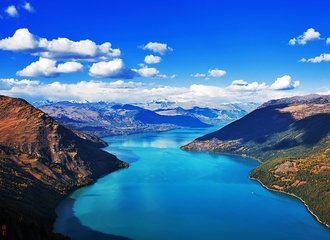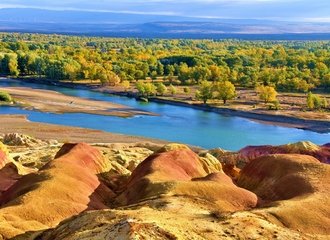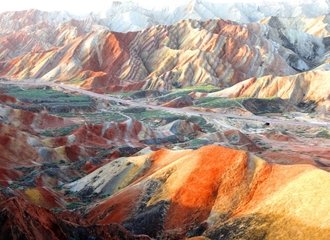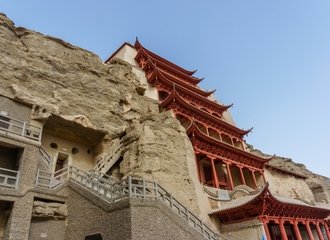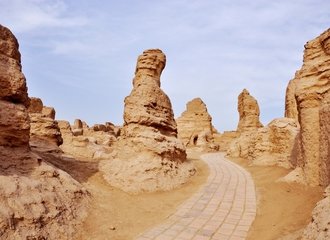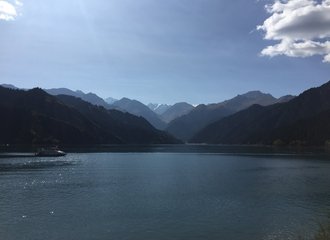The Ultimate Travel Guide to Mount Emei
Mount Emei is located near the mysterious 30°N latitude and dominates in the southwest of Sichuan Province. As one of the four famous mountains of Buddhism, it covers an area of 154 square kilometers mainly composed of four mountains: Da E Mountain, Er E Mountain, San E Mountain, and Si E Mountain. But Mount Emei, which people often say, mainly refers to Mountain Da'e with the highest peak Wanfo Summit at an altitude of 3,099 meters.
Higher than any of the Five Great Mountains of China and Mount Huangshan, the awe-inspiring and picturesque Mount Emei is a perfect place to experience four seasons in one day. With its "majestic, beautiful, divine, grotesque, spiritual" natural landscape and profound Buddhist culture, it was declared as the "World Cultural and Natural Heritage" by UNESCO.
Hailed as "Buddhist Celestial Mountain", "Kingdom of Plants", "Animals' Paradise" and "Geological Museum", etc. Mount Emei has attracted pilgrims and tourists from home and abroad for over thousands of years, with its natural beauty, timeless Buddhist heritage, abundant wild plants and animals, and unique geological landscape. Every traveler should not miss this beautiful mountain no matter if they make a Chengdu tour or Sichuan tour, and follow the below ultimate travel guide for inspiration.


Best time to visit Mount Emei and Emeishan climate
Mount Emei is suitable for travel at any time of the year, as different seasons are with different scenery. However, spring and autumn are the best seasons for Mount Emei, with a moderate climate and charming scenery. Among them, April and October are the best. With most cloudy days, these two months are covered with more sunny days than other times.
Mount Emei belongs to the humid climate zone of central subtropical and northern subtropical, with four distinct seasons. Spring is the season for the azaleas to bloom in the mountains, where a sea of colorful azaleas dots the mountain like a blossom carpet. Besides, April is the best time to see one of the famous Mt. Emei scenes, a sea of clouds, at Luo Peak. In addition to viewing the flowers and clouds, you can also participate in the Emei Mountain pilgrimage, appreciate the grand occasion of ten thousand lanterns towards Samantabhadra, and have a snap of Mount Emei's particularly fresh new tea.
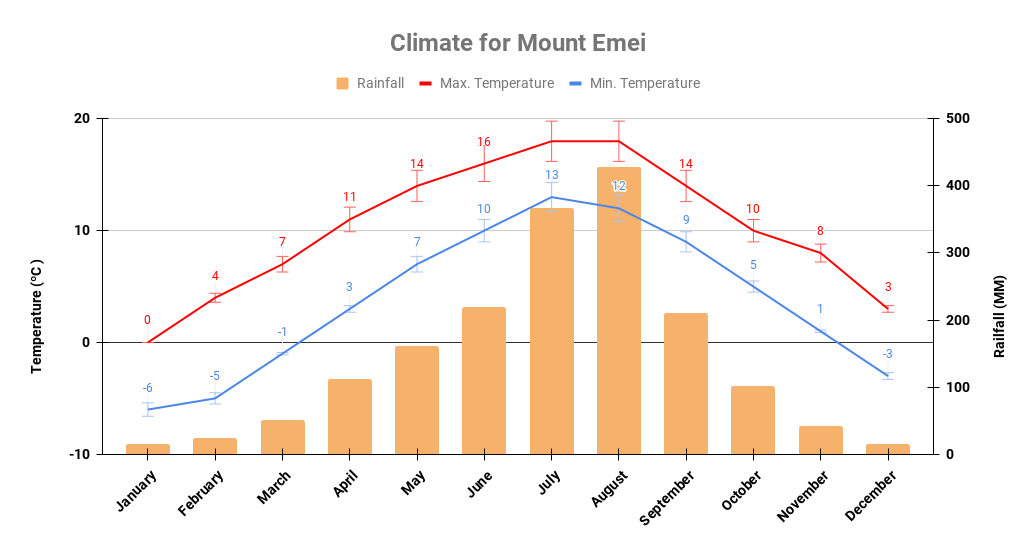
Mount Emei in autumn is gorgeous and elegant, the mountain dresses in different bright colors with green, yellow, red leaves. However, the autumn of Mount Emei is short, from mid-September to the end of October each year, the leaves on the mountain turn from dark green to yellow, from yellow to red. Standing on the golden summit and overlooking the valley in October, the scenery here is so majestic with thick frost, clouds and mist, and red leaves.
In summer, Mount Emei is like a huge natural air conditioner with breezy weather, the average temperature at this time is 11.8°C. The mid-elevation area is cool, quiet, and densely shaded by dense trees. Hence, it is best to go to Mount Emei to escape the summer heat, climb mountains, play in the water, discuss Zen, and enjoy tea.
Winter to Mount Emei is more and more admired by tourists, as of its stable and sunny weather from November to February. In addition, it is the best season to enjoy the breathtaking views of the sunrise, the sea of clouds, Buddha light, sunset, and other scenery. Furthermore, skiing and hot springs are also a big selling point this season. The heavy snow decorates Mount Emei as a winter fairyland while soaking in the hot springs can also dispel fatigue and coldness.
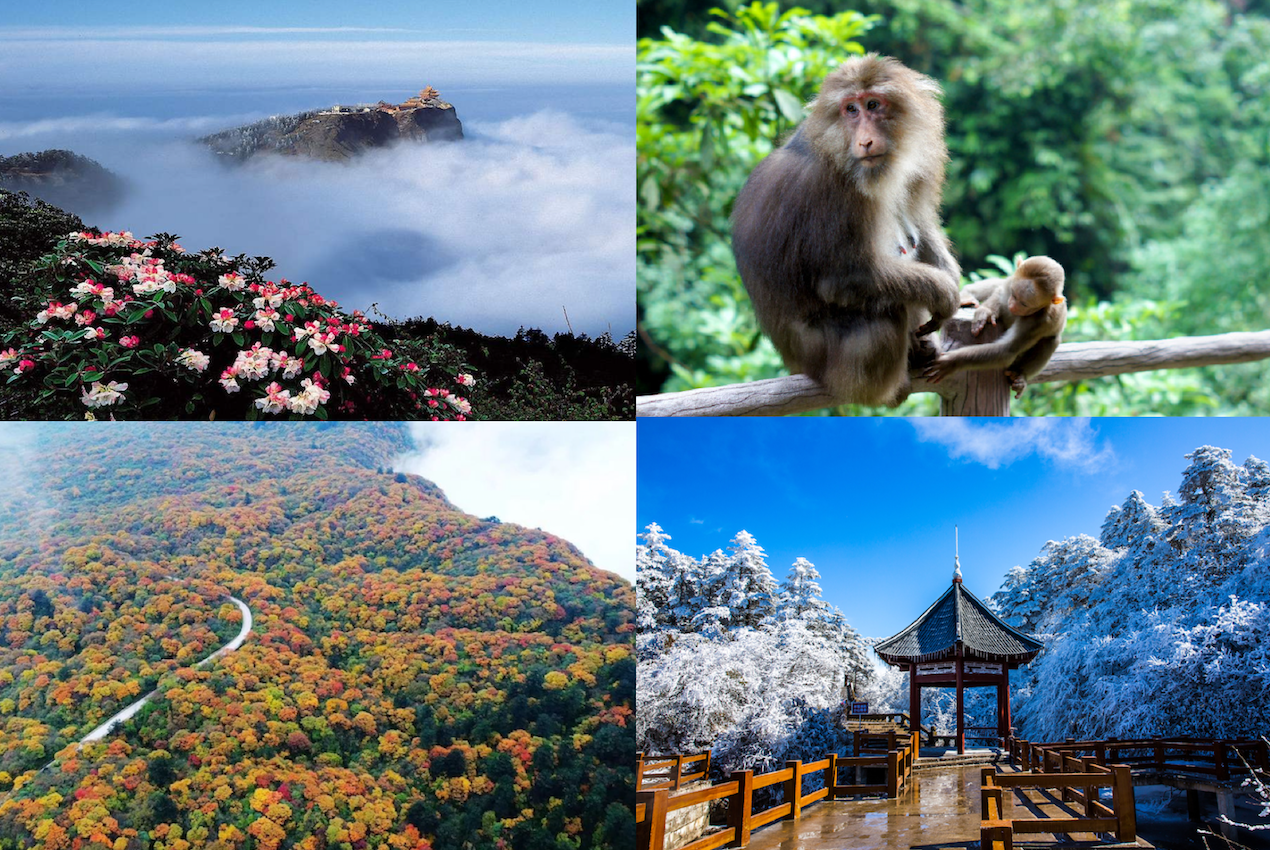

Top highlights of Mount Emei
1. Sunrise at Golden Summit
The sunrise on the Golden Summit coincides with the bells of the Buddhist temple. Gradually, a line of red clouds floats on the horizon, then under the colorful clouds, in an instant, spit out a little purple-red, then a round red sun embedded in the horizon. Along with the rising sun, the sky is full of sunrise, Mount Emei seems to be gradually covered with a golden cloak from head to toe, showing all her glamour to the visitors.
The sunrise view is varied in different weather conditions. On a fine day, it is possible to enjoy the whole process of the sunrise. If the east sky is covered with a cloudy haze, you might only be able to see a red sun far above the horizon. If the entire sky is covered with clouds, only the sunglow and clouds sea can be seen sometimes.
Warm Tip: The best time to appreciate the stunning sunrise is about 06:00 am in summer and about 07:00 am in winter.
2. Clouds Sea above XixiangChi
The elevation difference of Mount Emei is 2500 meters, and the clouds are mostly between 1000-2000 meters above sea level, so it can be seen all year round above Xixiangchi. Standing at the Golden Summit, the cloud was under our feet. Going down to Xianfeng Temple, the cloud was above our head. In Huayanding, people are in the clouds. Buddhism referred to the sea of clouds as the "Silver World". At sunrise and sunset, you can occasionally see the colorful sea of clouds, which is extremely beautiful.
Warm Tip: In general, the morning between 9:00-10:00 and the afternoon between 15:00-16:00 are the best time to enjoy the majestic Sea of Clouds in Mount Emei.
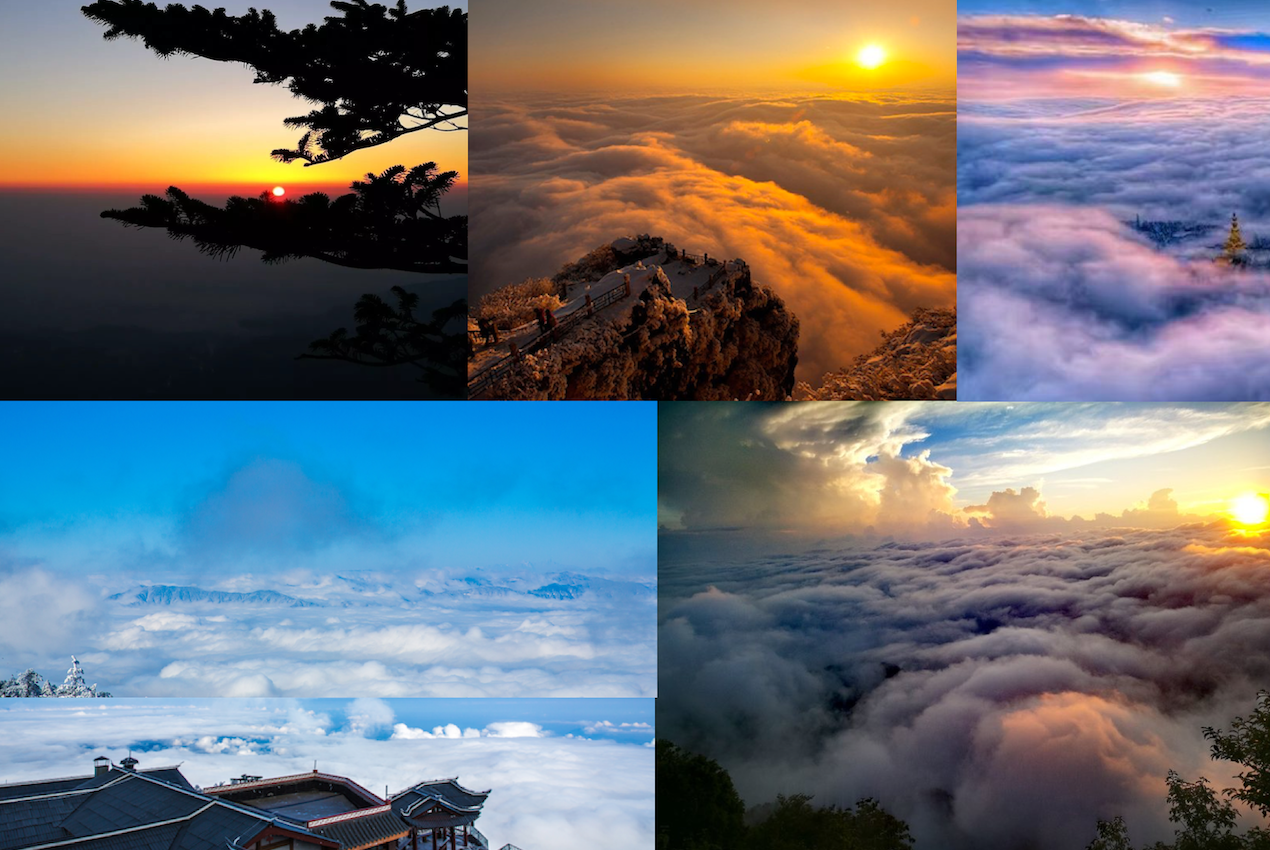
3. Buddha Rays of Sheshen Rock
In the afternoon, every place at the foot of the Sheshen Rock is wrapped with pure white clouds. Then an aura extends within a radius of around one to two meters (about 3 to 7 feet) with the color of red, orange, yellow, green, black-blue, blue, and purple, which looms and shines in the center like a mirror. Back against the sunlight from the west, sometimes you can find your own shadow in the aura. And your every action is followed by the figure in the aura as if you were facing a bright mirror. To your surprise, even if millions of people were watching it at the same time, they could only see their own figure in the aura. And this is the magic Buddha rays, which are rare in other places but appear in Mount Emei frequently.
Warm Tip: To admire the awe-inspiring Buddha light, morning between 9:00-10:00 and afternoon between 15:00-16:00 are widely acknowledged as the best time.
4. Saint Lamps at Golden Summit
In the dark nights of Golden Summit, you can see a point of fluorescence flowing between the valleys, then changing into several and gradually countless, which is the famous scenery “saint lamps” in Mt. Emei. Buddhism said it was "ten thousand bright lanterns toward Samantabhadra", which is rarer than the "Buddha Rays". There are more than one places where you can see the "Saint Lamps" in Mount Emei, such as Lingyan Temple, Fuhu Temple, Huayan Ding, Xixiang Pool, which have all appeared in history, but the most reliable one is the Golden Summit.
Warm Tip: A moonless night, that is, the night at the end of the lunar month or the beginning of the lunar month, when it has rained and cleared, is the best time to enjoy the astonishing views of Holy Lanterns.

5. Holy Land of Buddhism
Mount Emei is hailed as the "Holy Land of Buddhism" and the "Dojo of Samantabhadra" with a long history of Buddhism faith dating back to the mid 1st century BC. With nearly 2,000 years of development, it has become a place with rich Buddhist heritage, making it an influential holy place in China and even in the whole world. There are 27 big and small temples here housing more than 300 monks and nuns and enshrining vivid and exquisite statues of Buddha made of clay, wood, jade, bronze, and porcelain.
The pilgrimage of Mount Emei has become more connotative including embracing the Buddha's feet of Leshan Giant Buddha, learning the Dharma at the Giant Buddha Temple, entering the Buddhist gate at the Baoguo Temple, establishing a relationship with the Buddha at the Fuhu Temple, visiting the Buddhist Garden at the Qingyin Pavilion, worshiping the Buddha at the Wannian Temple, and opening the Buddha's light in the Golden Summit. Mount Emei has been regarded as the "Holy Land" in the hearts of many people at home and abroad.
6. The kingdom of flora and fauna
Mount Emei is evergreen all year round. The average temperature difference between the top and the foot of the mountain is 14°C. It is known as "a mountain witnesses four distinct seasons and each inch sees a different weather", coupled with low clouds, fog, and abundant rainfall, it is not only a kingdom of precious plants but also a paradise for rare birds and animals.
Mount Emei has more than 5,000 plants, which is equivalent to the total number of plants in Europe, with as many as 1,600 kinds of medicinal plants, and more than 3,000 kinds of higher plants. Among them, Alsophila spinulosa and Davidia involucrata are first-class national protected plants, and 103 species of plants are named after "Emei".
In addition, it has more than 2,300 kinds of wild animals, constituting this spiritual world. The first batch of nationally protected animals has 29 species, such as Emei Tibetan chief monkey, dead leaf butterfly, Emei mustache toad, black stork, piano frog, red panda, Emei mountain white pheasant, blue-throated sunbird, Red-bellied Horned Pheasant, etc.
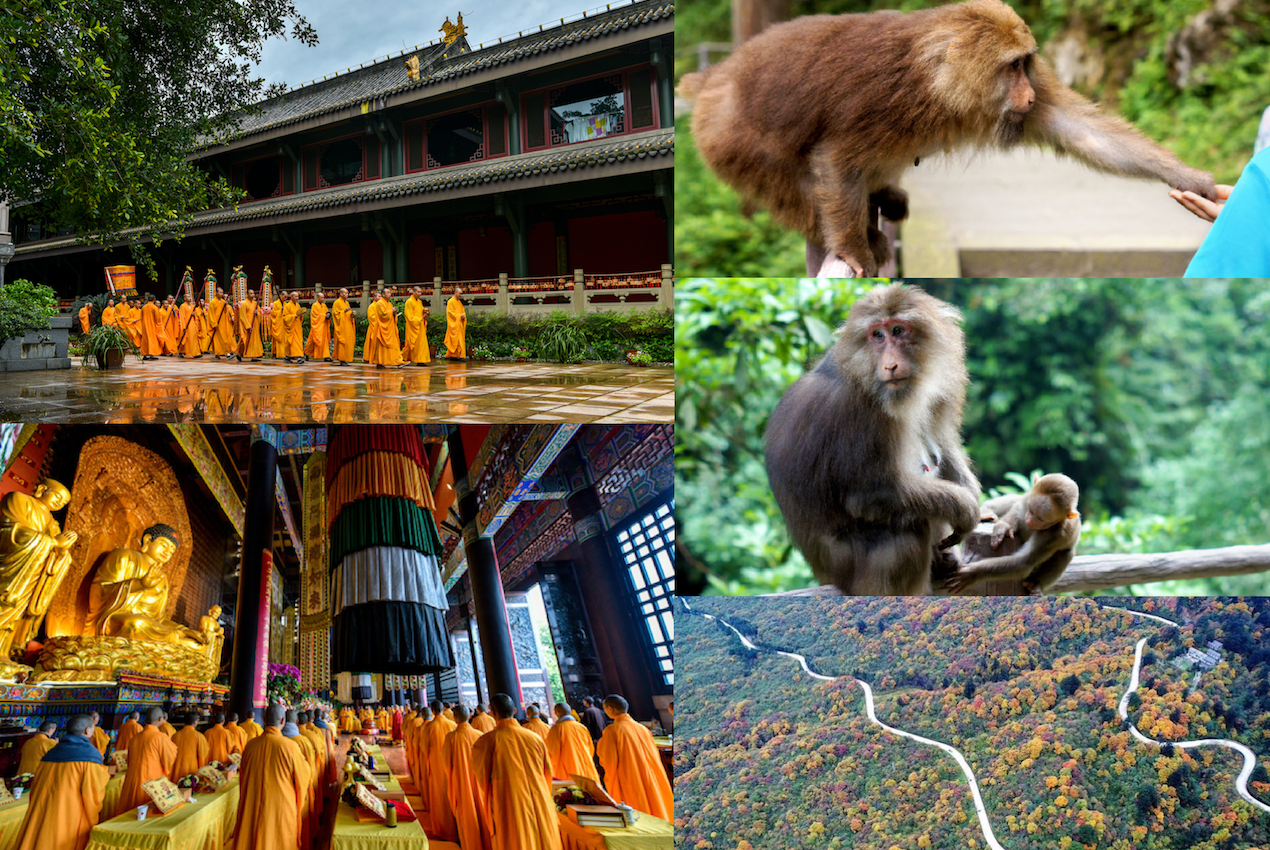

Things to do at Mount Emei
1. Take challenging hiking at Mount Emei
If you are a mountain hiking enthusiast, Mount Emei is the one that you shouldn’t miss. There are lots of amazing trekking trails, from scenic multi-hour’ hikes to multi-day wilderness excursions, spreading across the whole mountain. Most of the hiking trails are well-paved with stones and easy to walk for hikers of different ages, but some sections might be serious and steep which needs you to walk carefully.
The whole journey to climb from its foot to its summit is about 60KM along the winding hiking footpath with beautiful scenery, usually taking 3 days to complete, which is physically demanding but brings rewards with the unique spiritual and visual experience. En route, you will encounter the various sceneries of Mount Emei, such as dense forest, stunning waterfalls, and lakes, rare-to-see flora, and fauna. As well as some big or small temples.
2. Bathe in the Hot Spring to Smooth Your Body and Mind
After a tiring hiking exploration of Mount Emei, it is a wonderful experience to enjoy the hot spring there to dissipate your fatigue and tiredness as well as smooth your mind. The hot springs of Mount Emei are unique because of their unique geological structure and landscape. No matter if you prefer the outdoor or indoor spring, you will find a hot spring in Mount Emei to meet your desires.
Generally, we would highly recommend our clients to accommodate in a spring hotel, which offers the chance for you to enjoy the hot spring better. Undoubtedly, In addition to removing the tiredness and smoothing your mind, a relaxing and enjoyable spring experience can help you to have a nicer sleep. The famous hot springs in Mount Emei includes Lingxiu Hot Spring, Hongzhu Forest Hot Spring, and Yoga Zen Spa.

3. Learn Kung Fu in Emeishan
Emei martial arts, Shaolin martial arts, and Wudang martial arts are listed as the three major schools of Chinese martial arts. Among them, Emei martial arts is the earliest martial arts school with a long history of 2500 years. Emei school of martial arts, named after Mount Emei, originated in the Spring and Autumn Period and Warring States Period and flourished in the Tang and Song Dynasties for more than 500 years. Emei Kungfu includes five major schools.
Every afternoon, there will be martial arts hobbies to practice martial arts in front of Baoguo Temple, to meet friends with martial arts, and to introduce Emei martial arts to tourists and teach martial arts for free. During peak tourist seasons, holidays, and large-scale festivals, the Emeishan Wushu Association often organizes martial arts performances at Tianxia Famous Mountain Square, Baoguo Temple, and Huazang Temple. If you are a fan of Chinese martial arts, a visit to Mount Emei is definitely worthy, which offers you the chance to learn more about the magical Chinese Kung Fu.
4. Appreciate the Emei Tea Culture
Emeishan culture is composed of three parts: Emeishan Buddha culture, Emei school martial arts culture, and Emeishan tea culture. Among them, the Emeishan tea culture is ethereal and graceful, which is immersed in the Emeishan Buddhist culture and the Emei school martial arts culture, and the three cultures permeate and blend each other.
Mount Emei is the most ancient birthplace of Chinese tea. Benefiting from the featured natural environment, abundant tea resources, as well as the profound religious culture, there is a wide range of high-quality green tea in Mount Emei, famous tea here includes Emei Maofeng, Bitanpiaoxue, Emei Xueya, Zhuyeqing, etc. among them, Zhuyeqing is the most famous. While traveling to Mount Emei, the experience of tea picking and making is definitely one of the highlights of your trip. And the best time to pick tea is before the spring equinox.


How to reach Mount Emei and travel around
Though as a quiet and peaceful place far from the noisy and bustling big cities, Mount Emei is easy to reach, and most travelers choose Chengdu as their start point for a trip to Mount Emei or the nearby Leshan Giant Buddha.
Flight to Mount Emei
There's no airport at Emei city, travelers usually arrive at the nearest Chengdu Shuangliu International Airport first, and then take the connecting high-speed trains or civil aviation buses to Emei. As a big airport, there are many flights connecting the major cities in China, and Asia's capital cities as well as big cities in Europe and America with Chengdu.
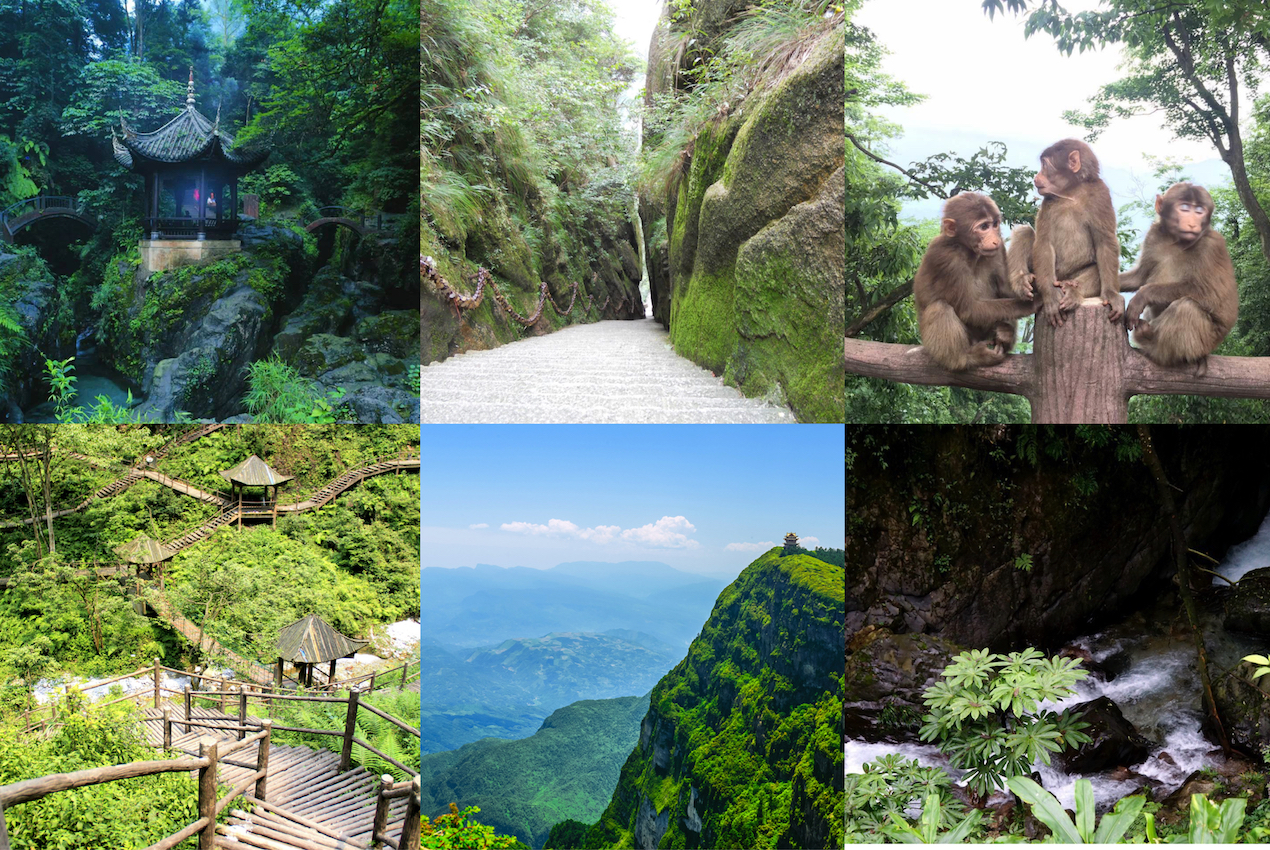
Railway to Mount Emei
At present, the convenient way to travel to Mount Emei is to take the high-speed rail from Chengdu via Chengdu-Mianyang-Leshan High-Speed Rail. As of October 2020, there are 14 shifts from Chengdu to Emei from 06:20 am to 21:46 pm on a daily basis, and the train ride is about 1-1.5 hours. The high-speed railway station is about 2KM from Mount Emei's entrance, which is easy to take a taxi to reach.
Overland driving to Mount Emei
Another popular way is to take the overland trip to Emei from Chengdu: by taking public buses or hire a private car through a local China travel agency. The most popular bus terminal Xinnanmen runs buses to Emei every half hour from 7:20 to 19:20, the ticket fare costs CN¥42 for a single way.

Recommended tours and itineraries at Mount Emei
Generally, people start their classic tour to Mount Emei from Chengdu and combine it with a visit to the world's biggest sitting Buddha in Leshan. Usually, it takes about 2-4 days to tour both world heritage sites, with the first day to visit Leshan Giant Buddha and head to Mount Emei overnight, and the next few days to explore the natural and cultural wonders of Mount Emei.
- For those with limited time and have a taste of Buddhist culture, a 2 days Leshan Giant Buddha and Mount Emei tour is highly recommended.
- For those who want to have an in-depth exploration of the Buddhist culture and beautiful natural scenery of Mount Emei and visit pandas at the same time, it is advisable to take our 3 days Mount Emei in-depth tour.
- If you are a hiking enthusiast, hiking from the bottom to the top of Mt. Emei is the best option to admire the beauty of Mt. Emei and challenge yourself. The hiking would require 4 days by combining Leshan Giant Buddha.
- If you are looking for a trip including the visit to all the world’s heritage sites of Sichuan, not only Leshan Giant Buddha and Mt. Emei and sufficient in time, the 9 days World heritage Sichuan tour must be the best option.
- Not interested in the pre-designed tour routes above, please don’t hesitate to share your comments directly. As a local China travel agency with 14+ years of experience, we are quite confident to tailor-make your special Sichuan tours based on your requirements.
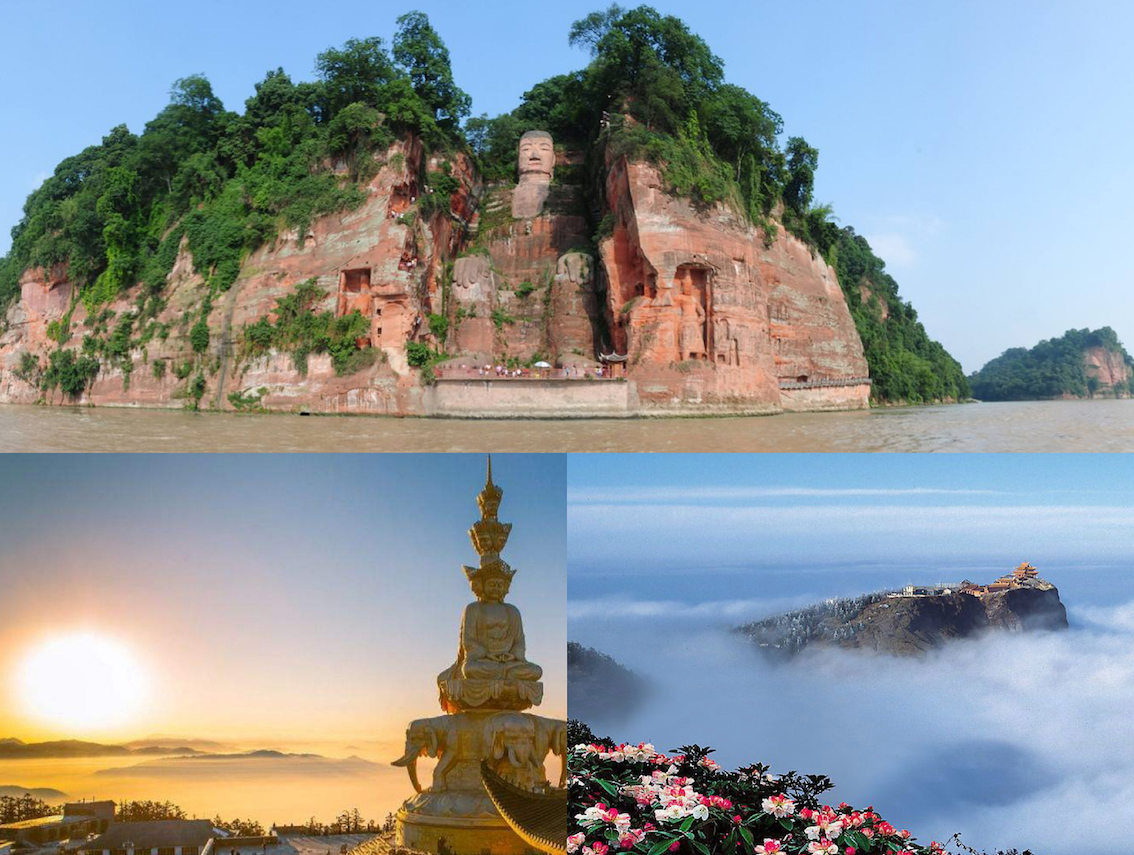

Accommodation and dining at Mount Emei
Accommodation:
With the booming of tourism in Mount Emei, there is a wide range of accommodations to meet all the budgets. For those preferring to have a unique experience, it is recommended to stay at one of the temples of Mount Emei, however, please be aware that the amenity of the temple guest house is very basic and limited.
For those looking for a budget stay, you may choose to stay at one of the local guest houses/hostels or budget hotels at the foot of Mount Emei or at the urban area of Emeishan, such as Teddy Bear Hostel or Holiday Inn Express Emei Mountain. If you are looking for a stay at the star-rated hotels with hot springs, the 4-star Emei Hot Spring Hotel and 5-star HongzhuShan Hotel are recommended. For those preferring to stay at the Golden Summit to appreciate the breathtaking sunrise, a night stay at the 3-star Emeishan Jinding Hotel or Jingding Villa should be the best option, however, the room rate is almost double or triple of the hotels at Mount Emei foot with the similar standard.
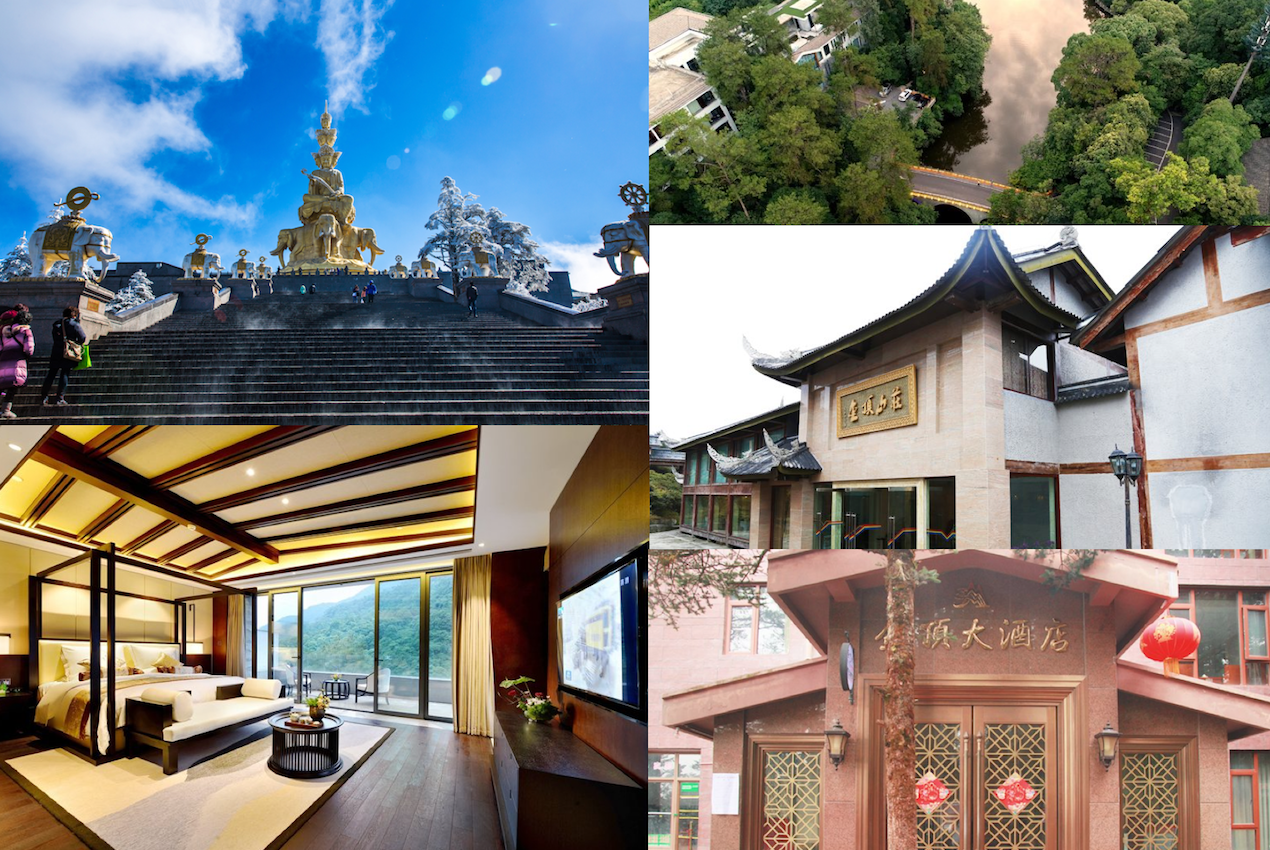
Dining options
Mount Emei is not only a paradise of beauty, a place for fun and stay, but also a kingdom of gourmet. There are many delicacies and snacks in Mount Emei, such as the special cuisines include Emei vegetarian food and Emei medicated diet, local specialties of Leshan include old bacon, Shenshui bean curd, beef soup pot, cooked silky fish, braised duck series, etc., and local snacks such as jelly, bean curd, three-in-one mud, frozen cake, Yeerba, Leshan Boboji, etc.
The vegetarian feast on Mount Emei is famous all over China too, which is served in most of the temples of Mount Emei. "Imitation meat" is a major feature of the production of the Emei Mountain vegetarian feast, which combines traditional production techniques and is famous for its exquisite workmanship and carving, and color, fragrance, taste, and beauty. In particular, the "Spring Water Bean Curd" and "Xueshui Kimchi" in Mount Emei are even more famous and can be called a must. In addition to the pilgrimage and sightseeing, it is a great pleasure to have a bite of the Buddhist vegetarian feast, among them, the dishes made by Wannian Temple are the best.
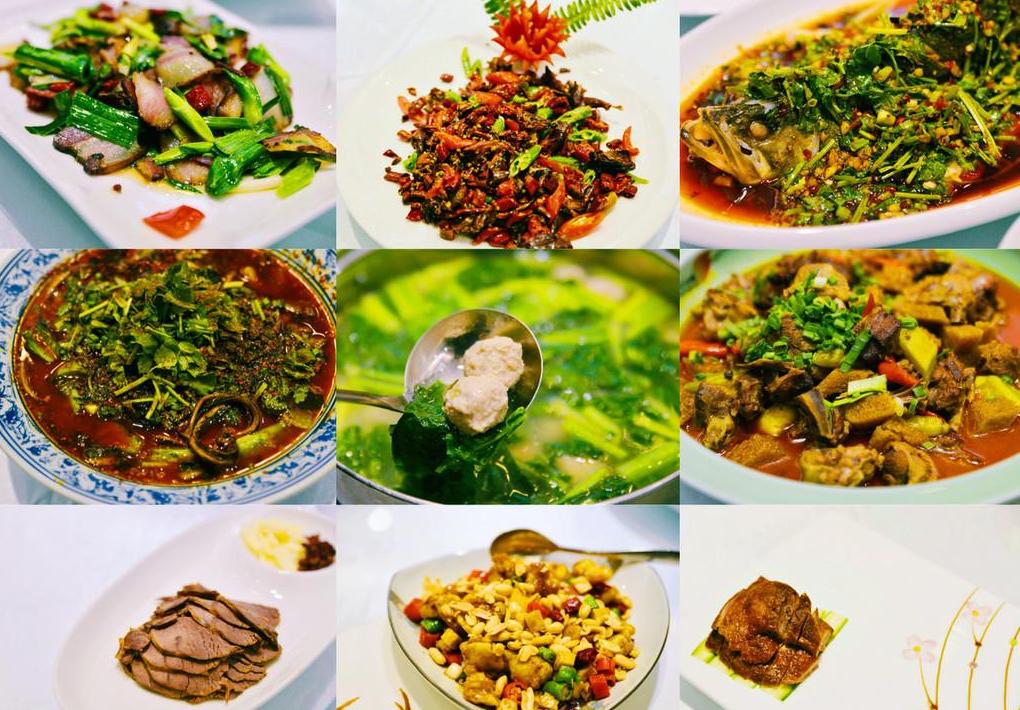

Mount Emei's tickets information
1. Admission Tickets:
- Peak Season: CN¥ 160 Per Person, preferential ticket: CN¥ 80 Per Person
- Low Season: CN¥ 110 Per Person (from Dec. 15th to Jan. 15th)
Notes: The admission ticket is valid within 2 natural days only if you enter Mount Emei at the same entry.
2. Cable Car Tickets:
- Golden Summit Cable Car:
- Peak Season: Ascend CN¥ 65 Per Person, Descend CN¥ 55 Per Person
- Low Season: Ascend CN¥ 30 Per Person, Descend CN¥ 20 Per Person
- Wannian Temple Cable Car:
- Peak Season: Ascend CN¥ 65 Per Person, Descend CN¥ 45 Per Person
- Low Season: Ascend CN¥ 30 Per Person, Descend CN¥ 20 Per Person
3. Sightseeing Bus Tickets:
Please note that there are 3 types of return tickets that can be purchased: mountain foot (Baoguosi center or Huangwan station) to half-mountain (Wanniansi station or Wuxiangang station), half-mountain to mountain summit (Leidongping station), mountain foot to the mountain summit. And the single-way tickets can only be bought when descending from mountain summit to mountain foot.
1). Return Tickets
- Baoguosi Center or Huangwan Station→Wanniansi Station or Wuxiangang Station→Baoguosi Center or Huangwan Station: CN¥ 40 Per Person
- Wanniansi Station or Wuxiangang Station→Leidongping Station→Wanniansi Station or Wuxiangang Station: CN¥ 70 Per Person
- Baoguosi Center or Huangwan Station→Leidongping Station→Wanniansi Station→Wuxiangang Station→Baoguosi Center or Huangwan Station: CN¥ 90 Per Person
2). Single-way Tickets
- Leidongping Station→Baoguosi Center: CN¥ 50 Per Person
- Leidongping Station→Wanniansi Station or Wuxiangang Station: CN¥ 40 Per Person
- Wanniansi Station or Wuxiangang Station→Baoguosi Center: CN¥ 20 Per Person
3). Sightseeing tour bus operation time
- Peak Season: The first bus departs at 6:00 am, and stops operating at 6:00 pm.
- Low Season: The first bus departs at 7:00 am, Baoguosi Center and Huangwan Station stop operating at 4:00 pm, Leidongping Station stops at 5:00 pm, and other stations stop at 6:00 pm.

